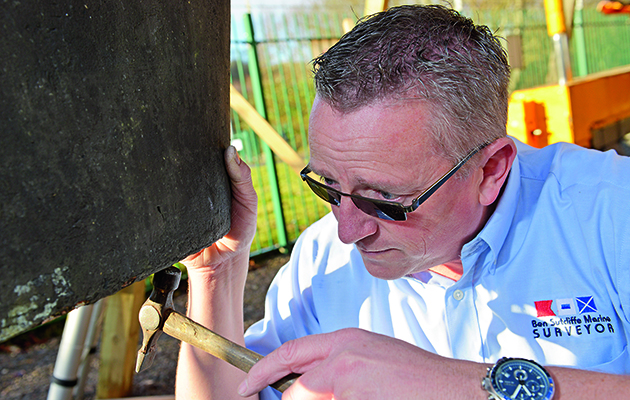Get your yacht shipshape and ready for launch with top tips from marine surveyor Ben Sutcliffe-Davies. How many of these checks do you do?
Many of us go out sailing at the first drop of sunshine – and I don’t blame you – but beware, if you’ve not regularly used or maintained your craft as well as you should, be sure to carry out a proper round of checks before you go out.
The most common RNLI call-outs fall into two basic categories: navigational error and machinery or engine failure.
When you consider how much more reliable engines are, and that most yachtsman use GPS, this always surprises me.

Check the chainplates and rig. If your stem cap is ‘smiling’, replace it
Many groundings I attend with serious keel damage come down to navigational error from the steering compass being significantly out.
Regularly check the accuracy of compasses, especially with electrical systems and engines. Run them and switch them off to see any issues with deviation.
These then should be recorded on a deviation card and referred to routinely.

Watch out for crevice corrosion developing in the rig
Rig tension is important. The condition of the stainless wire, and ensuring all is well, is also essential.
Some of the insurance claims I assessed last year were from roller furling top swivels being seized.
Crew were heaving on the roller and actually unwinding the forestay wire causing it to fail with catastrophic consequences – the rig coming down!
Another old chestnut is seacocks.

Worn-out sea cock assemblies are one of the main reasons yachts sink
The vast majority of seacock assemblies on yachts are now DZR brass ball valve assemblies, and any failures are at the skin fitting to the valve or the hose tail connection.
Both are due to weakness from the dezincification of the metal casting.
The valve, if CE marked, is considered fit for five years, though honestly we need to start treating them as consumables.
There are better alternatives on the market now worth exploring.

A skin fitting hose tail failure. This was on a vessel that was only seven years old. Credit: Ben Sutcliffe-Davies
What do you need for these checks? To be honest, one pair of eyes and daylight are a good start – plus a good LED torch.
A small hammer is useful for listening to propeller issues and hull or rudder blade delamination, but you will need to understand what the sound reverberations are.
This does take time and a good ear.

This skin-fitting hose tail came apart. Hose tails are often only 3mm thick. Credit: Ben Sutcliffe-Davies
When I do pre-purchase surveys, buyers have often seen something I’ve spotted but not realised the severity of it.
You do need to know what you are looking at – especially when it comes to movement in keel attachments and corrosion of standing wire, general fastenings, chain plates and the like.
I find that a camera with flash is a great way to look close-up at rigging, seacock assemblies and parts of the engine that are difficult to sight by eye.
Remember, if you’re unsure what you’re looking for, you can always call in a marine expert.
Call in the professionals
If you’re not confident in your own expertise to carry out checks, or are short on time, paying a professional can save headaches and costs in the long run.
Here are the services to consider:
- Rigger to check mast, running and standing rigging
- Marine mechanic for full engine service
- Boatyard for hull, keel, rudder and anode check
- Sailmaker for a sail service
- Marine electrician for wiring, lighting and electronic issues
- Gas engineer to check for leaks
- Marine surveyor for full or part survey




